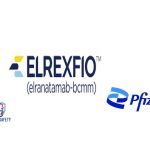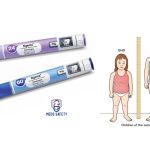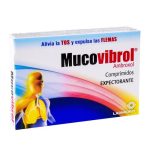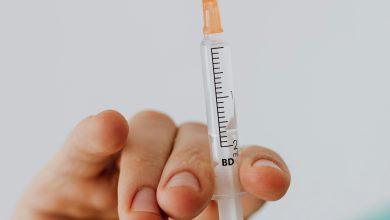Aphexda: Uses, Benefits, Dosage, Side Effects, Warnings
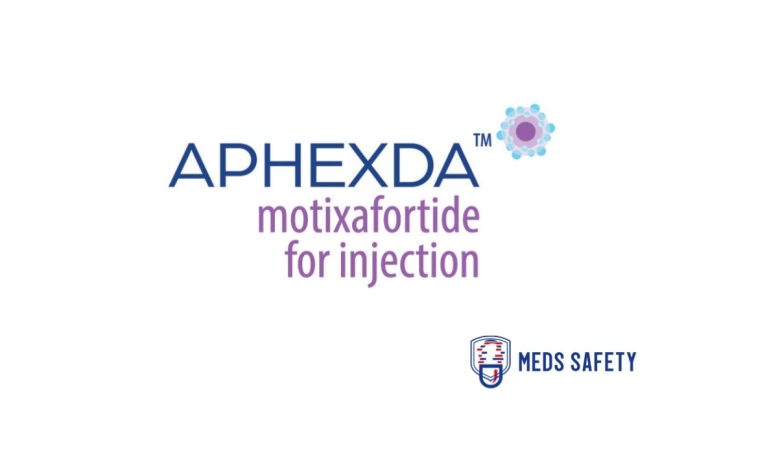
Aphexda (motixafortide) is a newly approved innovative therapy indicated for use in conjunction with filgrastim (G-CSF) to mobilize hematopoietic stem cells to the peripheral blood. It facilitates the collection and subsequent autologous transplantation of these vital cells in patients with multiple myeloma. This indication represents a significant advancement in the treatment of a disease that has historically posed significant challenges.
Multiple myeloma, a relentless blood cancer that targets plasma cells in the bone marrow, continues to challenge the healthcare community. However, a new ray of hope has emerged in the form of Aphexda™ (motixafortide), a groundbreaking therapy developed by BioLineRx Ltd. This CXCR4 antagonist, with its extended receptor occupancy of more than 72 hours, offers a promising solution when combined with filgrastim (G-CSF). Aphexda’s remarkable ability to mobilize hematopoietic stem cells to the peripheral blood for collection and subsequent autologous stem cell transplantation brings renewed optimism to patients battling multiple myeloma.
Aphexda comes in a specific dosage form and strength, carefully designed for its intended use in the treatment of multiple myeloma:
• Dosage Form: Aphexda is provided as a lyophilized powder. This means that it is initially in a dry, solid form, which requires reconstitution before administration.
• Strength: Each vial of Aphexda contains 62 mg of the active substance. This white to off-white lyophilized powder is precisely measured to ensure the correct dosage is administered.
• Packaging: Aphexda is available in single-dose vials. These vials are designed to contain a single, precise dose of the medication, ensuring accuracy and minimizing the risk of dosage errors.
Before administration, healthcare providers must reconstitute the lyophilized powder in the vial. This process typically involves adding a specific volume of diluent to the vial to create a solution suitable for injection.
It’s important for healthcare professionals to follow the reconstitution and administration instructions provided in the Full Prescribing Information to ensure the correct dosage is prepared and administered to patients with multiple myeloma.
Benefits
Aphexda is a game-changing that offers a range of significant benefits for patients facing this challenging blood cancer, some of the key advantages of Aphexda include:
1. Enhanced Hematopoietic Stem Cell Mobilization: One of the primary benefits of Aphexda is its ability to enhance the mobilization of hematopoietic stem cells (HSCs). HSCs are essential for the treatment of multiple myeloma, as they can be collected and subsequently used for autologous stem cell transplantation. Aphexda, when combined with filgrastim, enables more efficient mobilization of these crucial cells from the bone marrow to the peripheral blood. This improved mobilization can lead to a higher yield of HSCs for transplantation, increasing the chances of a successful procedure.
2. Improved Treatment Efficacy: Aphexda has demonstrated its effectiveness in clinical trials. In the Phase 3 GENESIS trial, Aphexda in combination with filgrastim significantly outperformed a placebo plus filgrastim regimen in terms of achieving the stem cell collection goal of ≥ 6 million CD34+ cells/kg. This means that more patients can reach the necessary threshold for stem cell collection, ensuring they have an adequate supply for transplantation. Improved treatment efficacy is a crucial benefit, as it enhances the overall success of autologous stem cell transplantation.
3. Streamlined Treatment Process: Traditionally, the mobilization of HSCs for autologous transplantation can be a complex and time-consuming process, involving multiple apheresis sessions and extended use of filgrastim. Aphexda simplifies this process by reducing the number of apheresis sessions required and decreasing the total dose of filgrastim. This streamlined treatment approach offers several benefits, including reduced treatment burden for patients and potentially lower healthcare costs.
4. Addressing Challenges in Stem Cell Collection: Historically, many multiple myeloma patients have faced challenges in collecting a sufficient number of HSCs for transplantation. Factors such as age and the use of certain induction regimens can impact stem cell mobilization. Aphexda represents a significant advancement in addressing these challenges by providing a more reliable and effective method of mobilizing HSCs. This is particularly important for older patients and those undergoing contemporary induction regimens, as it can significantly improve their chances of successful transplantation.
5. Greater Accessibility to Stem Cell Therapy: As Aphexda simplifies and improves the stem cell mobilization process, it opens up the possibility of autologous stem cell transplantation to a larger pool of multiple myeloma patients. This broader accessibility to stem cell therapy can potentially extend the benefits of this life-saving treatment to more individuals, ultimately improving outcomes and survival rates.
How Aphexda is used
Administering Aphexda in patients with multiple myeloma requires precise dosing and careful adherence to specific administration guidelines. Here’s an in-depth look at the dosage and administration instructions for APHEXDA:
1. Initiation of APHEXDA Treatment:
• The commencement of Aphexda treatment should follow the administration of filgrastim (a granulocyte-colony stimulating factor) daily for four consecutive days. This preparatory step is crucial to optimize the mobilization of hematopoietic stem cells.
2. Recommended Dosage:
• The recommended dosage of Aphexda is 1.25 mg/kg based on the patient’s actual body weight. This dosage is administered via subcutaneous injection.
• Timing is essential. Aphexda should be injected approximately 10 to 14 hours before the planned initiation of the apheresis procedure. This strategic timing allows for the effective mobilization of hematopoietic stem cells to the peripheral blood, which is critical for subsequent collection and autologous transplantation.
3. Second Dose Option:
• In some cases, a second dose of APHEXDA may be necessary to support additional apheresis sessions.
• Similar to the initial dose, the second dose should also be administered 10 to 14 hours before the scheduled third apheresis session.
For comprehensive and precise instructions on the preparation and administration of aphexda, healthcare providers should refer to the Full Prescribing Information provided with the medication.
These guidelines ensure that Aphexda is administered in a manner that maximizes its effectiveness in mobilizing hematopoietic stem cells for subsequent collection and autologous transplantation in patients with multiple myeloma. Following these dosage and administration instructions diligently is essential to achieve the desired therapeutic outcomes while minimizing potential risks.
Healthcare professionals should work closely with their patients to ensure they understand and adhere to these instructions, and any questions or concerns should be promptly addressed to optimize the treatment experience and outcomes.
Warnings and Precautions: Side Effects to Be Aware of with Aphexda
Aphexda can cause side effects. Here are some key warnings and precautions:
• Anaphylactic Shock and Hypersensitivity Reactions:
• Anaphylactic shock and hypersensitivity reactions have been reported in some patients.
• To mitigate this risk, all patients should be premedicated with a triple drug regimen 30-60 minutes before each Aphexda dose. This regimen includes:
• An H1-antihistamine,
• An H2 blocker, and
• A leukotriene inhibitor.
• Aphexda should be administered in a medical setting with immediate access to personnel and therapies for the treatment of anaphylaxis and other systemic reactions.
• Patients should be closely monitored for one hour following Aphexda administration, and any reactions should be managed promptly.
• Special caution should be exercised for patients receiving negative chronotropic drugs (e.g., beta-blockers), as they may be at higher risk for hypotension during hypersensitivity reactions. When appropriate, these drugs should be replaced with non-chronotropic alternatives.
• Injection Site Reactions:
• Injection site reactions, including pain (53%), erythema (27%), and pruritus (24%), have been observed in a significant percentage of patients.
• Severe reactions occurred in 9% of patients.
• Patients should receive premedication with an analgesic (e.g., acetaminophen) before each Aphexda dose to minimize discomfort.
• Analgesic medication and local treatments should be used post-dose, as needed.
• Tumor Cell Mobilization in Patients with Leukemia:
• Aphexda is not intended for hematopoietic stem cell (HSC) mobilization and harvest in patients with leukemia.
• Its use in such patients may lead to the mobilization of leukemic cells and subsequent contamination of the apheresis product.
• Leukocytosis:
• Administering Aphexda in combination with filgrastim can lead to an increase in circulating leukocytes as well as HSC populations.
• Regular monitoring of white blood cell counts is essential during Aphexda use.
• Potential for Tumor Cell Mobilization:
• When Aphexda is used alongside filgrastim for HSC mobilization, there is a potential for tumor cells to be released from the marrow and subsequently collected in the leukapheresis product.
• The effect of potential reinfusion of tumor cells has not been well-studied and should be carefully considered in clinical decision-making.
• Embryo-fetal Toxicity:
• Aphexda’s mechanism of action has the potential to cause fetal harm.
• Pregnant women should be informed of the potential risk to the fetus.
• Pregnancy status should be verified in females of reproductive potential before initiating treatment with Aphexda.
• Effective contraception should be advised during Aphexda treatment and for eight days after the final dose to prevent potential harm to the developing fetus.
Common Side Effects
While Aphexda offers significant benefits in multiple myeloma treatment, it is important to be aware of common side effects reported by patients, which include:
• Injection site reactions
• Pruritus
• Flushing
• Back pain
These side effects are typically manageable and should be discussed with healthcare providers to ensure patient comfort and safety during treatment.


